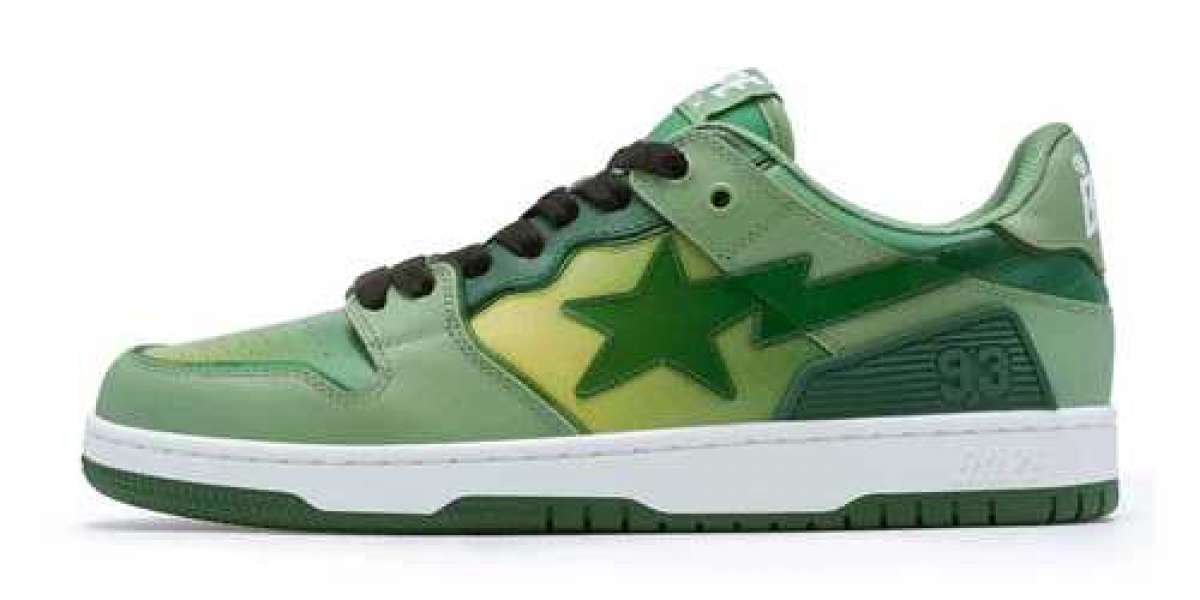The streetwear landscape has seen many iconic silhouettes, but few have made as lasting an impact as the Bapesta. Born from the fusion of Japanese street culture and hip-hop aesthetics, the Bapesta sneaker by A Bathing Ape (BAPE) has carved its own unique legacy in the sneaker world. Loved by fashion rebels, hip-hop royalty, and collectors alike, this bold sneaker has evolved from a cult favorite into a global symbol of street style.
In this guide, we’ll explore the origins of the Bapesta, its cultural significance, how it compares to other sneakers, and why it continues to dominate conversations in sneaker communities. Whether you’re a longtime collector or new to the game, understanding the Bapesta means understanding a vital part of sneaker history.
The Origins of the Bapesta
To understand the Bapesta, we first need to understand BAPE itself. Founded by Nigo in Tokyo in 1993, A Bathing Ape quickly made a name for itself with eye-catching designs and limited-edition drops. Inspired by Western hip-hop culture, Nigo was a passionate fan of brands like Nike and Adidas, and he envisioned a Japanese brand that could stand on equal footing.
In 2002, Nigo introduced the Bapesta sneaker. The silhouette immediately drew attention for its uncanny resemblance to the Nike Air Force 1, a deliberate choice that sparked both admiration and controversy. But while the design echoed a classic, Bapesta stood out thanks to its loud colorways, patent leather finishes, and the signature star-shaped logo – the “STA.”
Instead of simply replicating a Western sneaker, the Bapesta reinterpreted it through a uniquely Japanese streetwear lens. What emerged was a sneaker that respected its inspirations while confidently expressing a fresh, rebellious attitude.
The Cultural Impact of Bapesta
The early 2000s were a golden age for hip-hop and streetwear crossovers, and the Bapesta was perfectly positioned to ride that wave. Hip-hop artists such as Pharrell Williams, Kanye West, Lil Wayne, and Soulja Boy proudly rocked Bapestas both on stage and in music videos. Pharrell even collaborated with Nigo to create the Billionaire Boys Club and Ice Cream lines, both of which further amplified the Bapesta’s popularity.
The sneaker became a status symbol. Not only were they hard to get – BAPE’s limited drops and high price tags made sure of that – but they were also unmistakable in design. Bright pinks, electric blues, camo prints, and even Swarovski crystal-encrusted editions turned every pair into wearable art.
In an era before social media, the Bapesta became a viral sensation through music videos, magazines, and word of mouth. For many, owning a pair meant being tapped into something exclusive and forward-thinking.
Bapesta vs. Air Force 1: Similarities and Differences
No discussion about Bapesta is complete without addressing the elephant in the room: its similarity to the Nike Air Force 1. The parallels are obvious – both shoes share a nearly identical silhouette, sole unit, and paneling layout. Yet there are critical differences that give Bapesta its own personality.
The most striking difference is the branding. Where Nike features the Swoosh, Bapesta proudly showcases its lightning bolt “STA” logo. The materials also differ: while the Air Force 1 often uses leather or canvas, Bapestas are famous for their high-gloss patent leather finishes, often in vibrant, limited-edition colors.
Another key distinction lies in the cultural approach. The Air Force 1 has been a staple of urban fashion for decades, but Bapesta thrives on exclusivity and rarity. Each drop feels like an event, adding to the aura of scarcity and desirability.
While some purists criticized BAPE for mimicking Nike’s classic design, others saw it as a bold statement – a reinterpretation rather than a copy. In fact, the very controversy fueled the hype and helped cement Bapesta’s legend.
Design Evolution and Collaborations
Since its debut, the Bapesta has undergone several transformations. While the original patent leather models remain iconic, BAPE has experimented with new materials, including suede, mesh, and metallic finishes. The silhouettes have also been tweaked to include high-tops, mid-tops, and slip-on styles.
But what truly keeps the Bapesta relevant are its collaborations. From Marvel Comics and SpongeBob SquarePants to high-fashion houses and music icons, BAPE has consistently pushed the boundaries of sneaker design.
Limited-edition Bapestas tied to characters like Iron Man or cultural franchises like Hello Kitty appeal to collectors and fans across genres. More recently, partnerships with brands like Coach, Undefeated, and even Adidas demonstrate BAPE’s ability to remain culturally relevant in an ever-evolving market.
How to Style the Bapesta
One of the reasons the Bapesta has endured is its versatility in styling. Despite its bold appearance, the sneaker can complement a range of looks, from laid-back casual to loud and expressive streetwear fits.
Pairing Bapestas with slim or relaxed-fit jeans, oversized hoodies, or graphic tees lets the shoe take center stage. The sneaker’s loud design means the rest of the outfit doesn’t need to work as hard – the Bapesta does the talking.
For more daring fashionistas, mixing patterns and layering streetwear staples like cargo pants, techwear jackets, and caps can create an avant-garde, runway-worthy look. Thanks to its broad range of colorways, you can find a Bapesta to match virtually any aesthetic.
Where to Buy Bapestas Today
Bapestas remain highly coveted, and while you won’t always find them on shelves at your local sneaker store, they’re not impossible to get. A Bathing Ape’s flagship stores, particularly in cities like Tokyo, New York, and Hong Kong, regularly stock them. Online, BAPE’s official site and authorized retailers offer limited releases throughout the year.
For rare or older models, the resale market is your best bet. Platforms like StockX, GOAT, and Grailed offer verified listings, though prices can vary widely depending on rarity, size, and condition. It's important to be cautious of fakes, as Bapesta counterfeits are common due to the shoe’s popularity.
Why Bapesta Still Matters in 2025
More than two decades since its debut, the Bapesta is not just surviving – it’s thriving. Its legacy is one of constant reinvention, creative collaboration, and staying true to the spirit of streetwear. While trends come and go, the Bapesta has achieved what few sneakers have: iconic status across generations and continents.
In an industry that often focuses on performance tech or nostalgia, the Bapesta stands out as a bold, fashion-first sneaker. It’s a testament to the power of design, identity, and community – and it remains a must-have for anyone serious about street fashion.
Final Thoughts
The Bapesta isn’t just a sneaker; it’s a statement. It symbolizes creativity, exclusivity, and a fearless approach to fashion. Whether you're stepping into streetwear for the first time or you're a seasoned collector, the Bapesta offers a vibrant piece of cultural history that you can wear on your feet.
As the sneaker world continues to evolve, one thing is clear – the Bapesta isn’t just part of the conversation. It is the conversation.








